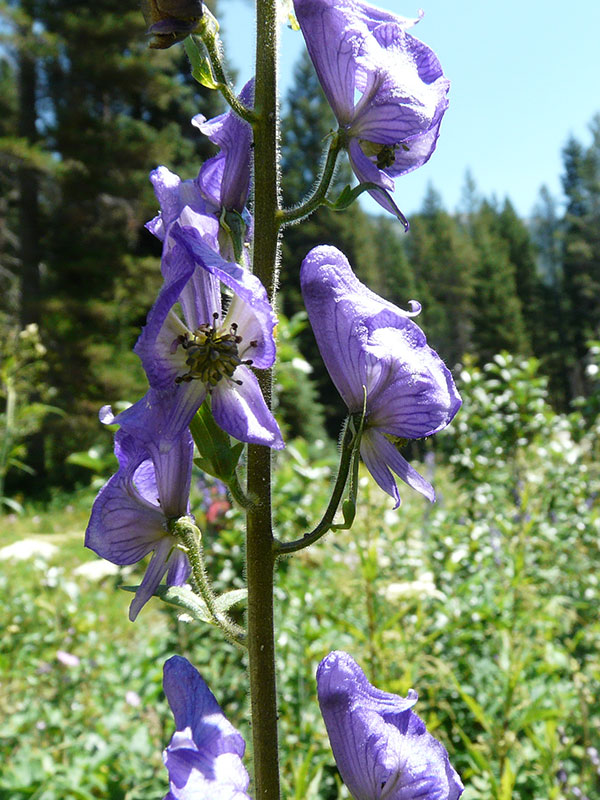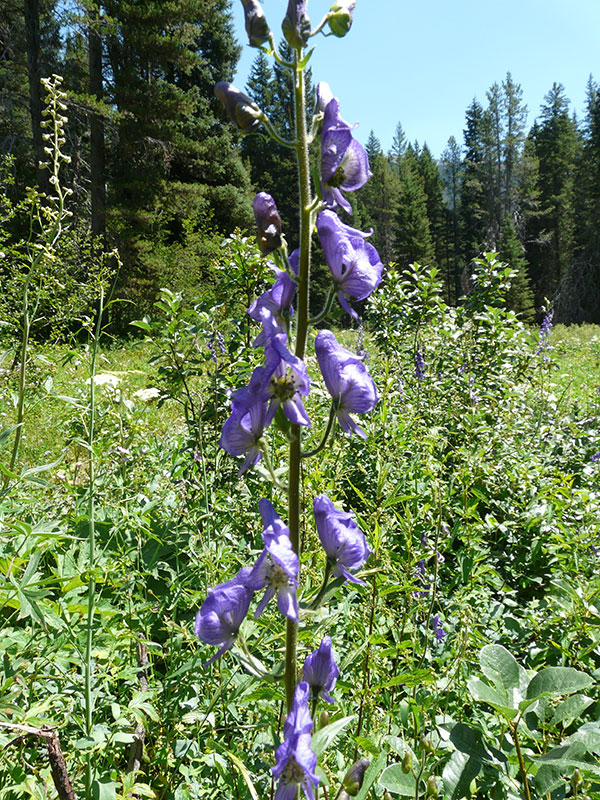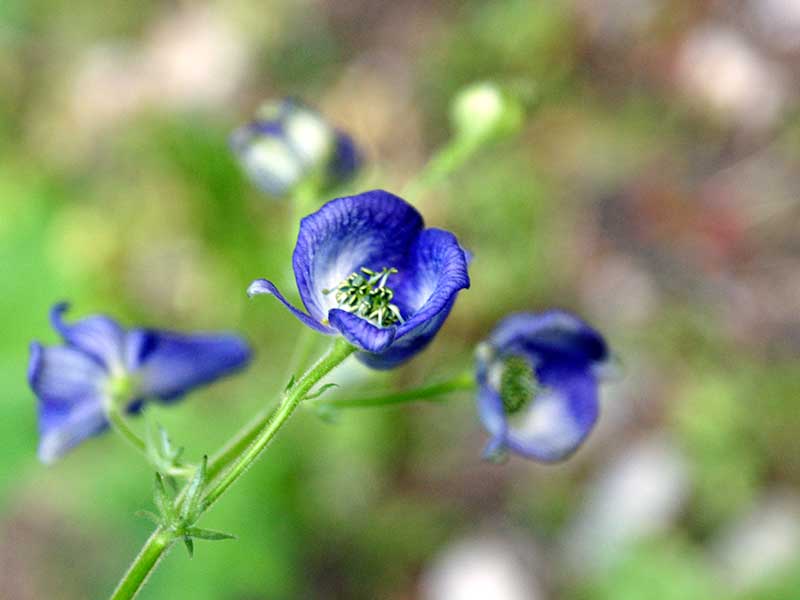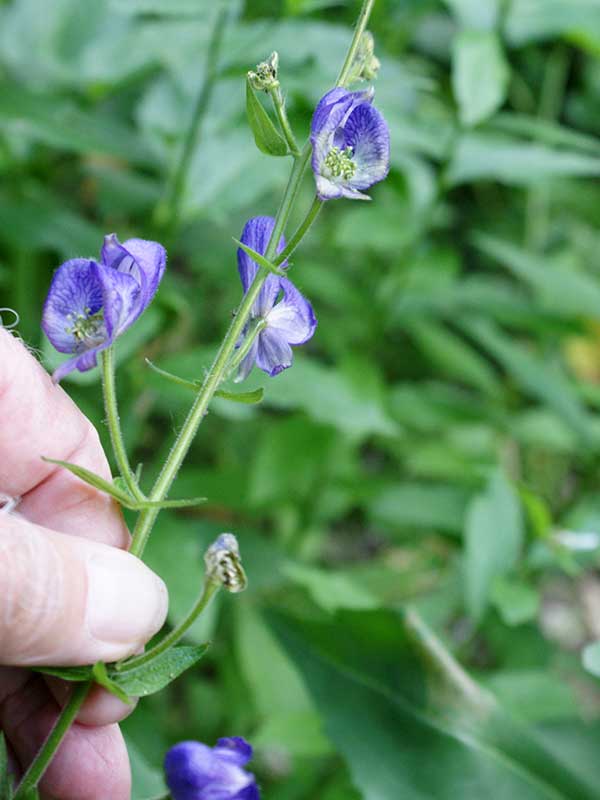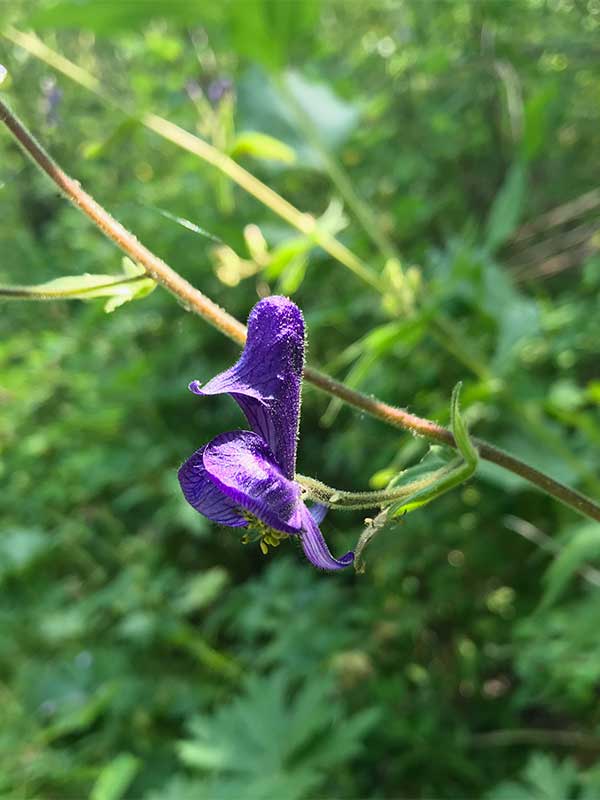Aconitum columbianum / monkshood
- brilliant blue/purple – ish; mixed colors or white
- petal-like sepals form the hood
- palmate, deeply-lobed & toothed leaves
Also known as: western monkshood, Columbian monkshood, wolf’s bane
The first thing you will notice about monkshood is that it is both weird and beautiful. Finding this plant along your path would itself make your day, but it always seems to be accompanied by other cool plants.
The monkshood inflorescence is brightly colored – usually brilliantly blue or purple. What we call the flower is actually a construction of petal-like sepals forming the hood. There are actually a couple small petals underneath the hood, but they “tend to disappear”. The rest of the flower parts are under there, too. As a result of all this structure, bees have to crawl through an obstacle course to get nectar and pollen.
Although it is reported to prefer wet meadows and stream banks, the photos here are from a dry-ish understory hillside at Murphy Creek and an exposed dry-ish area in Teton Canyon.
One more very important thing about monkshood is that all parts of the plant are poisonous. An extract of the plant was used to execute criminals and to poison wolves. It was also reportedly a component of witch’s brews (if there actually were such things).
| Color | |
|---|---|
| Family | |
| Blossom size | |
| Inflorescence size | |
| Inflorescence type | |
| When? | |
| Where? |
